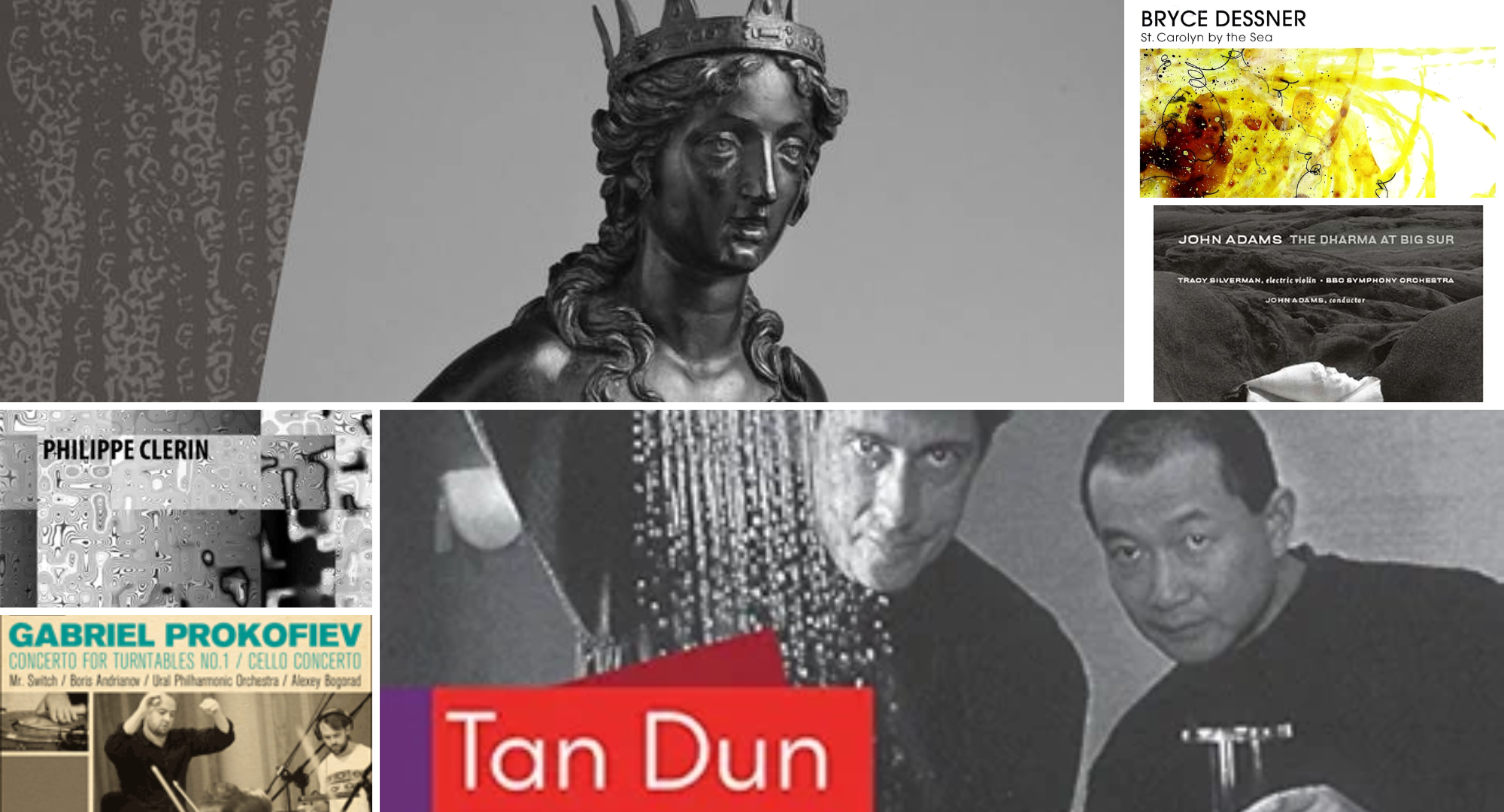I hope you enjoy this playlist of modern concertos made for modern instruments… or things being treated as instruments that normally aren’t, like birds and water. Ok, so it is an archival tape of birds, but let’s all imagine Concerto for Birds & Orchestra, Op. 61 “Cantus Arcticus” by Einojuhani Rautavaara was recorded in an aviary.
I think it’s quite a challenge to write works using non-traditional instruments – or anything that isn’t usual to a given ensemble. You have the advantage of novelty, but you don’t want to waste it and rely on novelty alone. I think Mark Applebaum’s Concerto for Florist and Orchestra is a perfect example of this – it goes hard and doesn’t rely on precarious flower arranging on it’s own. This work is also not on streaming services, so you will have to watch the linked YouTube video.
If you will direct your attention to below this text, you will notice WHERE you listen to my playlists has been updated – I have added Deezer to playlist options.
I give this playlist a Difficult Listening Hour rating of 5/10
To make sure these playlists delivered to your inbox every week, sign up for my newsletter.
Concerto for Electric Bass and Orchestra by Rodner Padilla performed by the Eduardo Marturet. Album: Concerto for Electric Bass and Orchestra
From the composer’s bio, “Rodner Padilla’s work has been reviewed in several specialized bass and music magazines such as “Musico Pro” (Colorado, USA), “Bass Musician Magazine” (Washington, USA), and “La Dosis” (Caracas, Venezuela). He Co-produced the Latin Grammy Nominee Album, “Gualberto + C4” by his group C4 Trio and the legendary Venezuelan singer, Gualberto Ibarreto.”
He has been nominated for and has won multiple Latin Grammys.
Sirens: A concerto for theremin and orchestra in three movements by Dalit Hadass Warshaw performed by the Boston Modern Orchestra Project.
Album: Dalit Hadass Warshaw: Sirens
From the composer’s bio, “An internationally acclaimed composer, pianist and thereminist, Dalit Hadass Warshaw’s works have been performed by numerous orchestral ensembles, including the New York and Israel Philharmonic Orchestras (Zubin Mehta conducting), the Boston Symphony, the Cleveland Orchestra, the Houston Symphony, the Albany Symphony and the Grand Rapids Symphony.”
Concert for Electric Cello, Glass Harmonica, Bass Flute and Strings by Clérin Philippe. Released as a single under the same name.
Concerto for Birds & Orchestra, Op. 61 “Cantus Arcticus” by Einojuhani Rautavaara performed by the Helsinki Philharmonic Orchestra.
Album: Apotheosis: The Best of Einojuhani Rautavaara
From the Kennedy Center’s bio, “Einojuhani Rautavaara … [was] considered by the world to be the most prominent living Finnish composer, as Jean Sibelius was a century ago. Mr. Rautavaara became internationally known for his “A Requiem in Our Time”, for the brass band repertoire, which won the Thor Johnson prize at a competition in Cincinnati in 1954. In 1955, Sibelius himself selected the 27 year old Mr. Rautavaara as the beneficiary of a scholarship for a composer to study in the United States. The receipt of the scholarship from Sibelius allowed him to study at Julliard and Tanglewood. At Tanglewood he studied with Roger Sessions and Aaron Copeland. He continued his studies in Switzerland and Germany. Since 1988 he has made his living as a composer in Helsinki. Mr. Rautavaara’s music evolved from diverse styles to being considered romantic or mystical.”
Concerto for Turntables No. 1 by Gabriel Prokofiev performed by the Ural Philharmonic Orchestra. Album: Gabriel Prokofiev Concerto for Turntables No. 1 & Cello Concerto
From the composer’s bio, “Composing music that both embraces and challenges western classical traditions, Gabriel Prokofiev has emerged as a significant voice in new approaches to classical music at the beginning of the 21st century. After completing his musical studies at Birmingham and York Universities, and dissatisfied with the seemingly insular world of contemporary classical music, he developed a parallel music career as a dance, grime, electro and hip-hop producer. This background in dance music combined with his classical roots gives his music a unique and truly contemporary sound.”
Concerto for Water Percussion and Orchestra by Tan Dun performed by the New York Philharmonic.
Album: Tan Dun: Concerto for Water Percussion and Orchestra in Memory of Toru Takemitsu
From Wikipedia, “Tan Dun is a Chinese-born American composer and conductor. A leading figure of contemporary classical music,[2] he draws from a variety of Western and Chinese influences, a pairing which has shaped much of his life and music. Having collaborated with leading orchestras around the world, Tan is the recipient of numerous awards, including a Grawemeyer Award for his opera Marco Polo (1996) and both an Academy Award and Grammy Award for his film score in Ang Lee’s Crouching Tiger, Hidden Dragon (2000). His oeuvre as a whole includes operas, orchestral, vocal, chamber, solo and film scores, as well as genres that Tan terms “organic music” and “music ritual.”
The Dharma at Big Sur by John Adams performed by the BBC Symphony Orchestra.
Album: The Dharma at Big Sur / My Father Knew Charles Ives
From Wikipedia, “The Dharma at Big Sur is a composition for solo electric violin and orchestra by the American composer John Adams. The piece calls for some instruments (harps, piano, samplers) to use just intonation, a tuning system in which intervals sound pure, rather than equal temperament, the common Western tuning system in which all intervals except the octave are slightly impure.”
St. Carolyn By The Sea by Bryce Dessner performed by the Copenhagen Phil.
Album: St. Carolyn By the Sea
Program Note, “St. Carolyn by the Sea is based on an episode in the book Big Sur by the Beat Generation author Jack Kerouac. The composer translates Kerouac’s surreal hallucinations into an evocative soundscape. “When I wrote the piece I was in a state of emotional trauma”, admits Dessner. “It has a slight romantic intensity about it and it does shift states. It starts in this kind of sweet longing and then it moves into the more aggressive section and it has, obviously, a kind of triumphant ending.”

